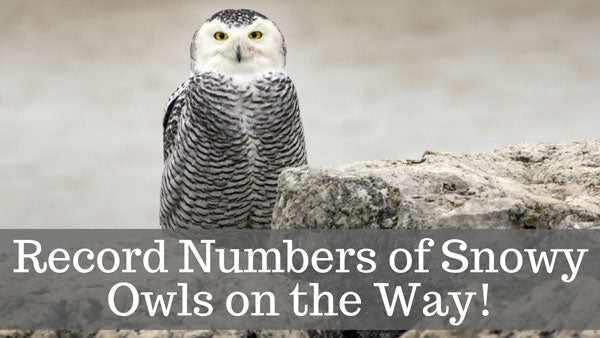Offer
Provide additional details about the offer you're running.
Provide additional details about the offer you're running.
Provide additional details about the offer you're running.

As (most) of our migrants have left us for the year, the shift has been steadily moving towards winter birding for us here in the Ottawa area. As temperatures continue to swing up and down and more snow starts to accumulate, we are fixated on the possibility of spotting some of our favourite birds of winter.
In addition to the fabulous finches and colourful cardinals, there is one particular large raptor that continues to captivate birders and non-birders alike during the winter season.
The snowy owl.
With its beautiful white and black spotted plumage, often perched high above us hunting for its next meal, these owls are a staple to the winter birders field work. Perhaps it is there reclusive nature or the fact that they simply don’t visit us all that often that attracts us to them. No matter what might attract us to these lovely raptors, it certainly seems like many of us will get a glimpse of one over the coming months.
For those of us that follow these birds each and every winter, memories from the winter of 2013-14 still abound. The irruption of snowy owls during that season was one so large that it was well beyond any previously recorded irruption since the early 1900s.
When it comes to whether or not snowy owls head south from their homes in the Tundra, the answer often lies with the lemmings. These small rodents, native to the Tundra do not hibernate and are among the snowy owl’s favourite snacks. In seasons where lemming populations are low, we are often treated to additional snowy owls here in southern Canada and in parts of the northern United States, which is what happened back in 2013.

Fast-forward to 2017 and what we have had since then is an increase in lemming numbers in the Arctic Tundra. Thinking conversely on traditional hypothesis surrounding the snowy owl, many believe that due to the increase in lemming populations, snowy owl populations have grown as well.
In fact, reports indicate that many owls over the past few years were producing upwards of seven to nine eggs per hatch, rather than the usual five to seven egg standards. What this means is that even with strong lemming populations, the competition for food will once again become scarce for the owls of the Tundra, prompting them to move south this winter in search of additional food sources.
With the above in mind, as birders, we must remain vigilant in protecting the safety of these birds. While a treat to behold, if your camera cannot clearly get the picture as intended, refrain from getting too close. As we are all aware, birds need to conserve their energy during the winter months, and distracting a snowy owl while hunting might be the difference between eating a meal that day or not.
It is also worth noting that given the circumstances, we will likely be treated to a number of juvenile birds this season. As first-time visitors to areas populated by humans, they might appear to be friendly but are truthfully blissfully naïve. Keep your distance and respect these beautiful birds and they will remain on the landscape for years to come.
High Quality Blend